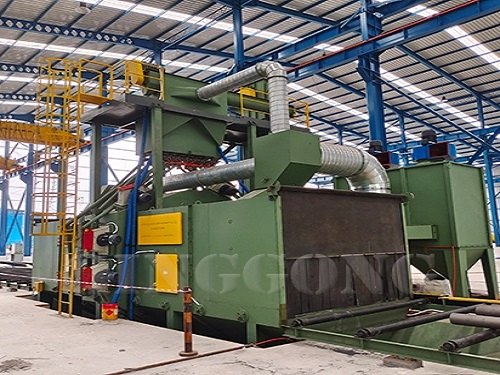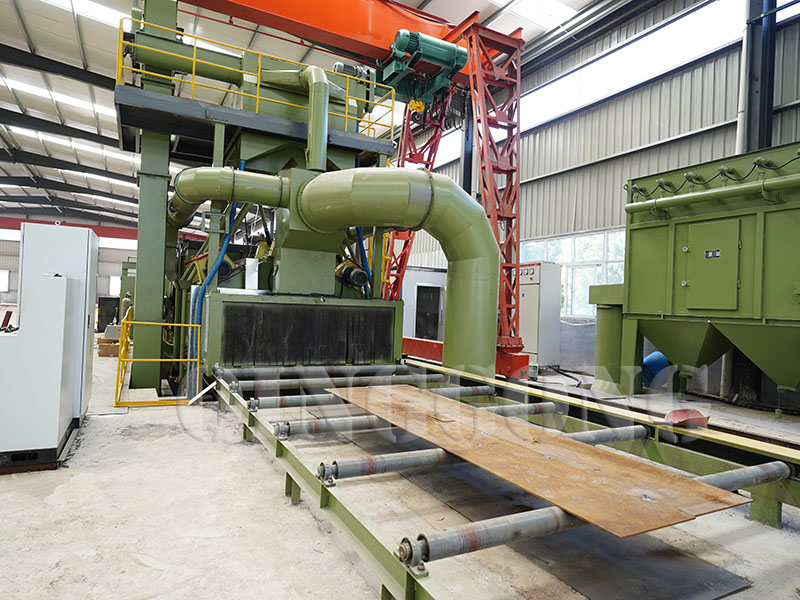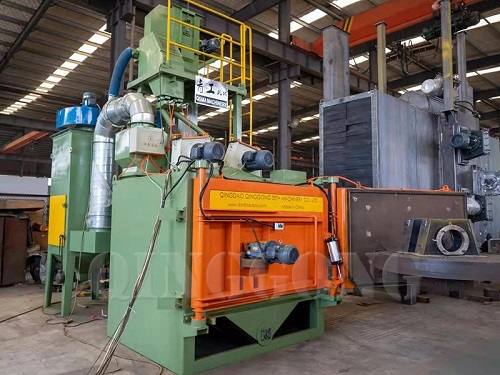The dust removal system includes suction and dust exhaust pipes, bottom and side dust suction ports, modular filter cartridge dust collector, dust exhaust fan, dust exhaust chimney and other components.
The working principle of the dust removal system:
In the sandblasting room, the dust removal system adopts a circulating dust collection process with upper air intake, lower and side air exhaust (see the working principle diagram of the room). Clean air enters the sandblasting room from the top of the room. The dust removal fan sucks the polluted air in the room into the sandblasting room dust collector through each dust suction port for collection and processing.
Since the dust recovery suction inlets of the environmental recycling sandblasting room are all arranged under the honeycomb sand suction floor and on the side walls of the house, the airflow drives the dust to move from top to bottom. Dust has been suppressed in the lower part of the blasting room, so the dust concentration in the space above 0.5 meters in the blasting room is very low, the visibility is very high, and the working environment is good.
While the sand recovery fan collects sand dust from the honeycomb floor and enters the sand separator for separation processing, it also sucks a part of the useless dust into the filter element for dust collection and processing, and the clean air is discharged out of the atmosphere. The dust exhaust pipes of the two dust exhaust fans can be combined as needed, and finally enter the exhaust chimney to meet the standard requirements of emission standards.
Due to the structure of the traditional blasting room, the dust removal port is usually arranged on the top of the blasting room, and the flow direction of the dust is bottom-up or horizontal flow. Therefore, the dust content in the shot blasting room is always high during the sandblasting operation, the visibility is low, and the working environment is harsh.
 EN
EN
 fr
fr  de
de  es
es  it
it  ru
ru  pt
pt  ar
ar  th
th  pl
pl  ro
ro 


